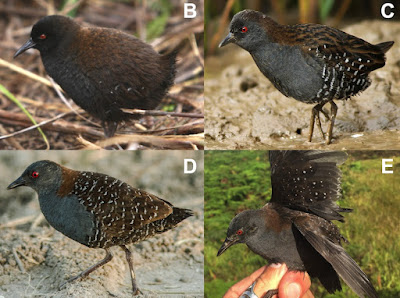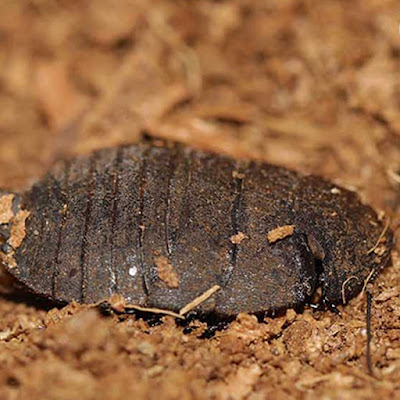![]() |
Mecistops leptorhynchus (Bennett, 1835)
in Shirley, Carr, Nestler, Vliet & Brochu, 2018. |
Abstract
Molecular and morphological evidence has shown that the African slender-snouted, or sharp-nosed, crocodile Mecistops cataphractus (Cuvier, 1824) is comprised of two superficially cryptic species: one endemic to West Africa and the other endemic to Central Africa. Our ability to characterize the two species is compromised by the complicated taxonomic history of the lineage and overlapping ranges of variation in distinguishing morphological features. The name M. cataphractus was evidently originally based on West African material, but the holotype is now lost. Although types exist for other names based on the West African form, the name M. cataphractus is sufficiently entrenched in the literature, and other names sufficiently obscure, to justify retypification. Here, we designate a neotype for M. cataphractus and restrict it to West Africa. We resurrect M. leptorhynchus as a valid species from Central Africa and identify exemplary referred specimens that, collectively, overcome the obscurity and diagnostic limits of the extant holotype. We additionally indicate suitable neotype material in the event the holotype is lost, destroyed, or otherwise needing replacement, and we rectify the previously erroneous type locality designation. We provide a revised diagnosis for crown Mecistops, and revise and update previous descriptions of the two living species, including providing both more complete descriptions and discussion of diagnostic characters. Finally, we provide considerable discussion of the current state of knowledge of these species’ ecology, natural history, and distribution.
Keywords: Reptilia, Mecistops, Crocodylia, Crocodylidae, leptorhynchus, bennettii, cataphractus, congicus, cryptic species
SYSTEMATICS
Crocodylia Gmelin, 1789
Crocodylidae Cuvier, 1807
Mecistops Gray, 1844
Etymology. Gray (1844) did not offer an etymology for Mecistops. However, ‘Mecist’ is most likely derived from the Greek mekist, meaning longest, and ‘ops’ is a derivative of the Greek opsis meaning appearance or aspect. Thus, the name Mecistops most likely refers to the elongated appearance of the skull/snout in slender-snouted crocodiles relative to species of the genus Crocodylus.
Content. Mecistops cataphractus (Cuvier, 1824) and M. leptorhynchus (Bennett, 1835).
Distribution. Mecistops is endemic to western Africa ranging from Lake Tanganyika and Lake Mweru in the east to the Gambia River in the west and, at least historically, occupying all major river drainages, lakes, and wetlands with appropriate habitat north to the 13th parallel in far western Africa (i.e., Senegambia region), the 10th parallel in West Africa (i.e., Upper Guinea block), and the 6th parallel in Central Africa (Fig. 1).
![]() |
Map showing the distribution of Mecistops and its two content species: M. cataphractus and M. leptorhynchus.
|
![]() |
Mecistops cataphractus (Cuvier, 1824)
typically colored and patterned animals from the Senegambia area illustrating the dark gold background color and heavy black blotching, jaw spots, and overall dark patterning from the Gambia River, River Gambia National Park, The Gambia.
|
Mecistops cataphractus (Cuvier, 1824)
Crocodilus cataphractus Cuvier, 1824: 58.
Type RCSM 710 (lost), juvenile. Unknown origin, terra typica designated Senegal River (Fuchs et al. 1974a). Gray 1831: 59. Duméril & Bibron 1836: 126. Falconer 1846: 362. Duméril & Duméril 1851: 29, 1852: 252. Owen 1853: 155. Huxley 1859: 16. Duméril 1861: 171. Strauch 1866: 60 & 106, 1868: 58. Giebel 1877: 105. Boulenger 1889: 279. Mook 1921b: 159.
Mecistops bennettii Gray, 1844: 57 (nomen novum for Crocodilus leptorhynchus Bennett 1835; Type NHMUK 1977.444).
Mecistops cataphractus Gray, 1844: 57. Baikie 1857: 57. Tornier 1901: 66; 1902: 663. Nieden 1913: 53. McAliley et al. 2006: 17. Hekkala et al. 2011: 4201. Shirley et al. 2014: 2.
Crocodylus cataphractus Schmidt 1919: 417. Wermuth & Mertens 1961: 359. King & Burke 1989: 9.
Etymology. Cuvier (1824) did not provide an etymology for cataphractus. However, we assume it came from the Greek kataphraktos (κατάφρακτος) meaning armored, shielded or completely enclosed. Cuvier (1824) gave this species the French common name “crocodile à nuque cuirassée” (“armor-necked crocodile”). Both the Latin and French are presumably in reference to the extra rows of dorsal scutes joining the nuchal cluster compared to other crocodiles of the genus Crocodylus.
![]() |
Mecistops leptorhynchus, high orange and black individual from the N’gowe River, Gabon.
(photo: J. Thorbjarnarson) |
Mecistops leptorhynchus (Bennett, 1835)
Crocodilus leptorhynchus Bennett, 1835: 128 (apud. Fernando Po; Type NHMUK 1947.3.6.35, juvenile, Cuvier 1836: 116). Murray 1862: 222.
Etymology. Bennett (1835) did not provide an etymology for leptorhynchus. However, ‘lepto’ is derived from the Greek leptós meaning thin, fine, or slender and rhynchos meaning beak or snout. Thus, Mecistops leptorhynchus is a slender snouted crocodylian of the genus Mecistops, which Bennett may have found appropriate given his finding of a longer head length to head width ratio (3:1) than he found in M. cataphractus (2.5:1).
Conclusions
As for other recently proposed taxonomic revisions within Crocodylia (i.e., the dwarf and Nile crocodile cryptic species complexes), at first glance slender-snouted crocodiles from Lake Tanganyika to the Gambia River appear quite similar. However, we here provide significant cranial shape, external phenotypic, and ecological data that, in addition to previously published molecular and discrete morphological evidence (Shirley et al. 2014), strongly support the recognition of two species in the genus Mecistops. That all morphological, molecular, and ecologically segregating characters are isolated in two different biogeographic zones makes identification of M. cataphractus and M. leptorhynchus, at least in the wild, a non-contentious issue. Further, for legislation enforcement (e.g., CITES), as well as management of captive populations, we identified sufficient molecular and morphological characters for unambiguous species identification. However, this may not be so critical for the former as Mecistops species are integrally protected and listed in CITES Appendix I in all range states and are generally not considered of value in the international trade of crocodylian products (e.g., skins).
![]()
Matthew H. Shirley, Amanda N. Carr, Jennifer H. Nestler, Kent A. Vliet and Christopher A. Brochu. 2018. Systematic Revision of the Living African Slender-snouted Crocodiles (
Mecistops Gray, 1844).
Zootaxa. 4504(2); 151–193. DOI:
10.11646/zootaxa.4504.2.1


































































































